According to the Kirat Chronology, the Mangar people came from a place called Shin in the north of the Himalayas. They came south in the fifth century, following two leaders, Shing Mangar and Chitu Mangar. The people in the south called them Tangsang Thapa, meaning people who came from far away in the north. As time went by these people grew in number and were divided into twelve clans known as Barah Mangar.
In History and Culture of Kirat People, Iman Singh Chemzong elaborates that when they arrived in the territory now known as Sikkim they built fortifications, called Mangardzong, to protect their settlements. They established Mangar rule in various parts of the land, including Sikkim, and now the territory known as Darjeeling District. There are evidences that they also mingled with the Lepchas. There is a clan called Mongormu among the Lepchas, and there are linguistic affinities among the Mangars, Lepchas and Limbus. The Mangars are credited for introducing the sweet potato into Sikkim and Nepal. The Lepcha call it mangarbook or the potatoes brought by the Mangars.
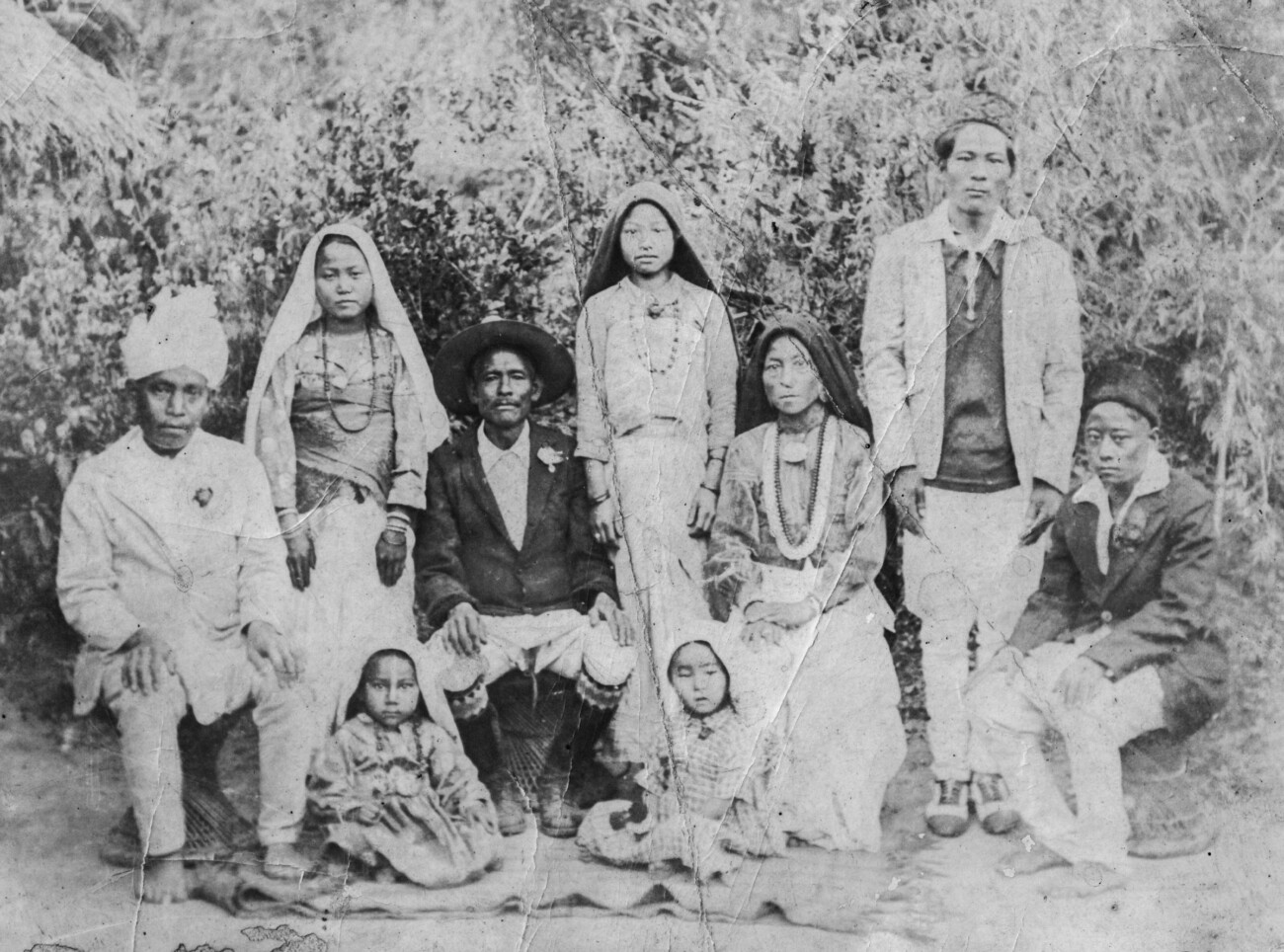
(Courtesy: Dilmaya Mangar)
Maharaja Sir Thutop Namgyal and his Queen Yeshey Dolma’s book mentions that when a team of messengers, along with Phuntsog Namgyal, started for Yuksom they crossed over the Rakdong bridge and proceeded through Yangang. While passing through Yangang they came across some Lepchas and Mangars. When Phuntsog Namgyal was crowned in Yuksom there were Bhutia, Lepcha, Limbu and Mangar people present at the event.
Prior to the establishment of the Namgyal dynasty, Sikkim was divided into tiny kingdoms among the Lepchas, Limbus and Mangars. According to Santosh Ahlay, the author of The History of Mangar People and their Culture in Sikkim, between 1600-1700 there were two Mangar chiefs in Kamrang and Suldung. The Mangars fought and resisted the Bhutia rulers right until the eighteenth century. In Kamrang, Dal Singh Mangar, the chief, was killed and his Lepcha consort disappeared among the steep cliffs. In Suldung, when the Mangar chief was killed his followers were scattered and fled to other areas. The Suldung Garhi or dzong is still intact. Over the years, it was used by different people. The Bhutias made it a place of worship and have adorned the top of the fort with prayers carved on flat stones. Between 1717-1780 when the Gorkha armies invaded South and West Sikkim they occupied this fort. They left carvings of the sun and moon, and inscriptions in Gorkhali. Much later, in the early twentieth century, a community of Sadhu Rais, followers of Guru Gyandil Das of Gelling, used it as a place of worship and also as a burial ground for their gurus. They still conduct prayers there during Mangsir Purnima.
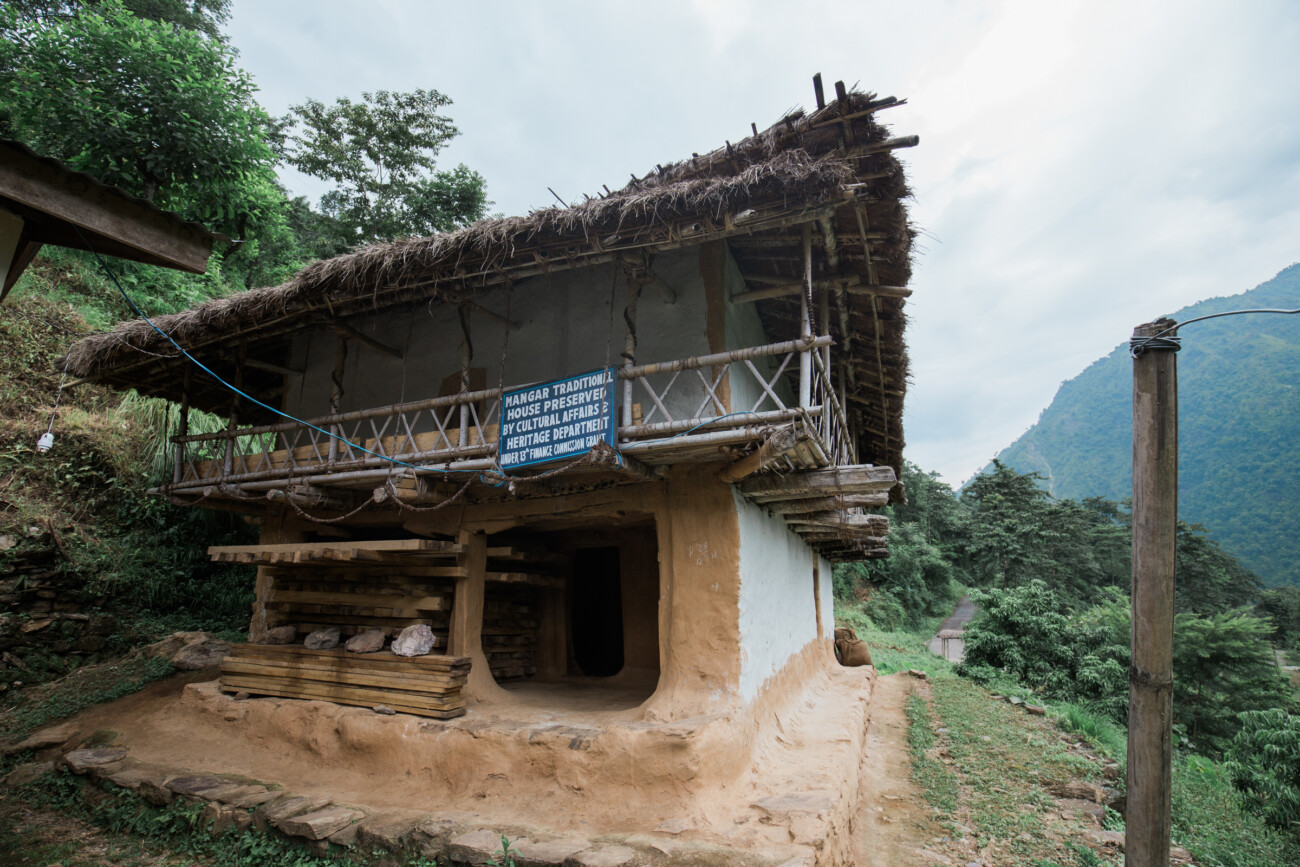
The first Chogyal spent much of his time trying to bring the Mangars under his sway. While the Lepchas and Limbus seemingly accepted his authority, the Mangars continued to resist. Dal Kinari Khapangi Mangar of Barthang-Barfok was the last Mangar chief killed by the Bhutias. Ashley Eden, in the 1864 version of the Gazetteer of Sikkim had this to say about Phuntsog Namgyal’s reign, “Very little is known of his reign: but in all probability he was chiefly engaged in subduing or winning over the chiefs of the petty clans inhabiting the country east of the Arun.” He goes on to write that, “…with the help of Lha-tsan Lama, he overcame the Shintu Satichenor Mangal Gyalpa, though the latter seems to have been a Lepcha, the name sounds more like the Mangar one. This tribe occupied the valleys to the South of the Kinchinjingna-Everest range. The chief disappeared, leaving no trace, after vowing he would petition the sun and moon for the injuries done to him.”
John Dalton Hooker, an English botanist, also mentions that the Mangars, a tribe confined to the west of Arun River, are the aborigines of Sikkim. They were driven westward into the country of the Limbus and then pushed further west still. They were said to be of a non-Tibetan origin.
The history of the Mangars of Sikkim has almost been wiped out, and the people have been scattered from their homes. Frail evidences and fading memories are the only tools that are now driving some of them to search more vigorously for their lost histories.
The Mangars have their own customs of marriage, birth and death. They do not encourage marriage alliances outside their community, but in such eventuality, there is an elaborate ritual carried out in the presence of Barah Mangar, the representatives of twelve original clans, to accept the bride from another community into their own. The Mangars bury their dead, and the last rites are performed by their priest, called Bhusal. Customarily, the sons or the male members of the family carry out the ten-day long mourning rituals which include living in isolation from others and abstaining from salt, oil and spices until the tenth day when the purification ceremony takes place. The purification ceremony includes sprinkling of soonpani, water in which a pure gold ornament is dipped.
Taranath Thapa and restoration of Mangardzong
The history of the Mangars of Sikkim has almost been wiped out, and the people have been scattered from their homes. Frail evidences and fading memories are the only tools that are now driving some of them to search more vigorously for their lost histories. Taranath Thapa, a retired school teacher, is one such man. He served in the Third Gurkha Regiment for eighteen years. While in the army, he also completed his education, and on his return, found himself a job as a school teacher. Now he talks about his desire to restore the lost history of his people. The remains of Mangardzongs in different parts testify to their presence in Sikkim—Kamrang, Suldung Garhi, Rateypani, Barfok and Mangsari, also in areas which now fall under West Bengal and Darjeeling.
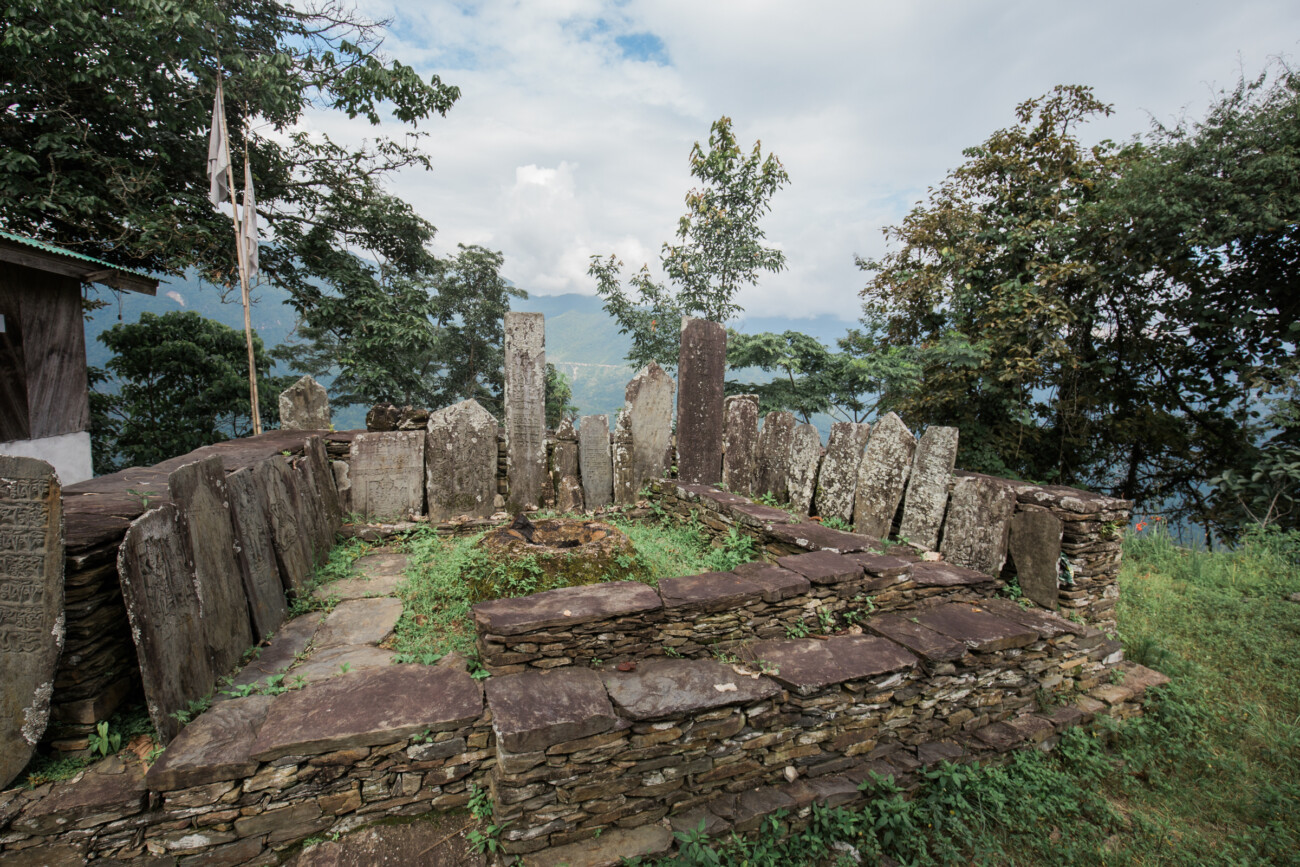
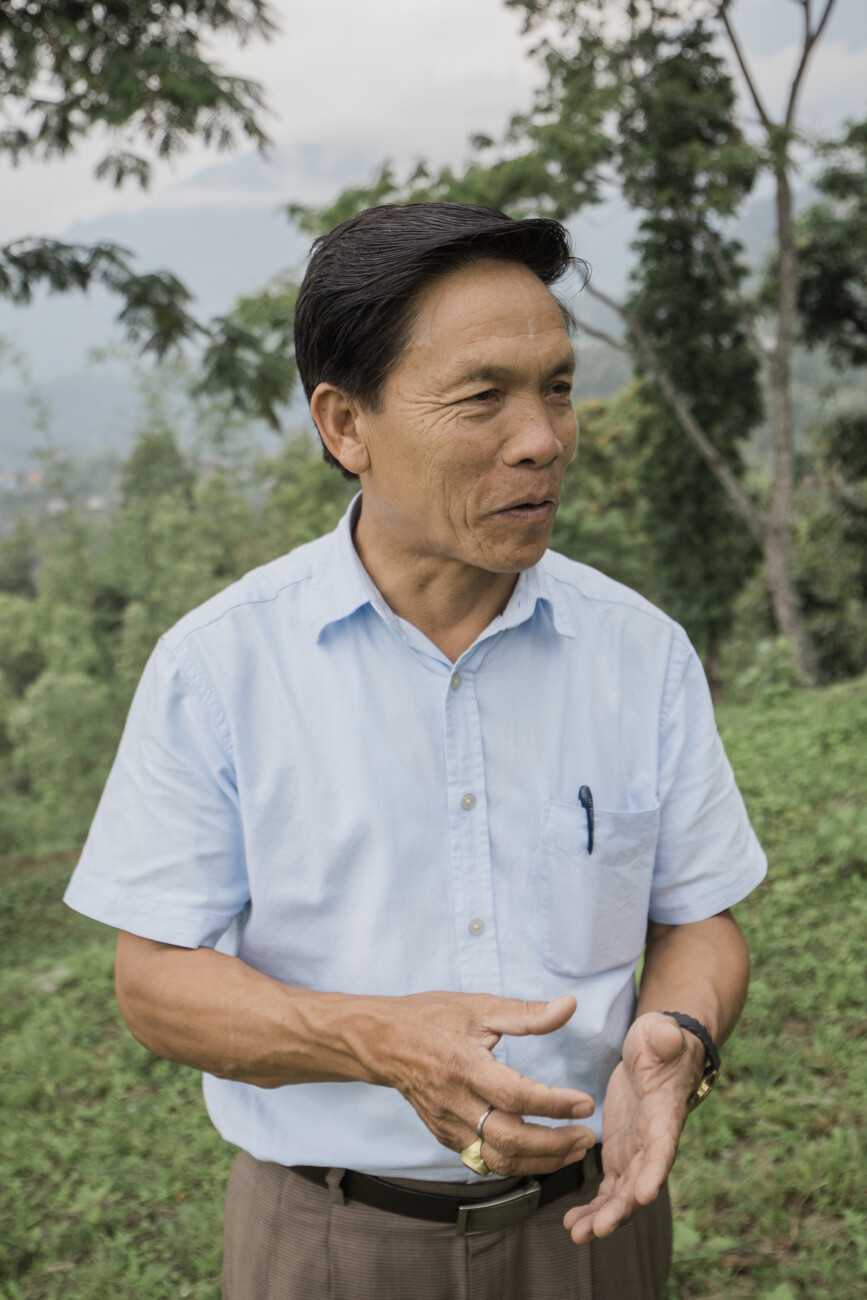
Taranath Thapa grew up listening to the stories of Raja Sintupati Sen Mangar and his queen, told by Chandramaya Tamang, a grandmotherly figure of his childhood. Prior to the coming of the Bhutias, these areas were inhabited by the Limbus and the Mangars who had established areas of control and lived under the guidance of their chiefs. The Mangardzong in Mangsari was established by Sintupati Sen around circa 1600 A.D. The site lies above Soreng in West Sikkim.
From this hill Raja Sintupati Sen ruled the surrounding land. In 1642 he received a message from the new Bhutia King, Phuntsog Namgyal, to surrender. Instead, Sintupati Sen sent a message to the nearby Subba King, Mabuhang for help. When the Bhutia soldiers arrived, Sintupati Sen was ready; with the combined forces of the Limbus and the Mangars, he successfully repelled the invaders.
Peace reigned. Everything was quiet, but after sometime, with a reinforcement of a greater number of Tibetan soldiers, in a surprise move Phuntsog Namgyal’s army attacked Mangardzong and chased the king down the hill. Crossing the jungle which is the burial ground for the Limbus, they came to a beautiful open meadow below Tharpu village where Sintupati Sen was surrounded and killed. This meadow is now known as Rajatar (king’s meadow).
Meanwhile, in the palace, the grieving queen decided that rather than fall into the hands of the enemy soldiers she would prefer to die. She found her way to the river at the bottom of the hill and jumped in. The river is called Rani Khola (queen’s river). This story made a great impression on Taranath.
During his stint in the Indian Army, he was posted at Jhansi where he came across a memorial for the Bundelkhand queen, Rani of Jhansi, who had fought bravely against the British. Taranath thought of doing something to memorialize Sintupati Sen—his resistance and his tragic end. The Mangar people were scattered and no trace of them can be found here, even today in Mansari Mangardzong. Later, Tamang and Chettri people came to settle in the area. The king is enshrined in the incantation of the jhankris (shaman) as part of their rituals. The Mangars along with Sanyasi and Chettri still invoke the name of the king on mangsir purnima (the harvest full-moon night) and offer him fowls, eggs, flowers and seasonal fruits.
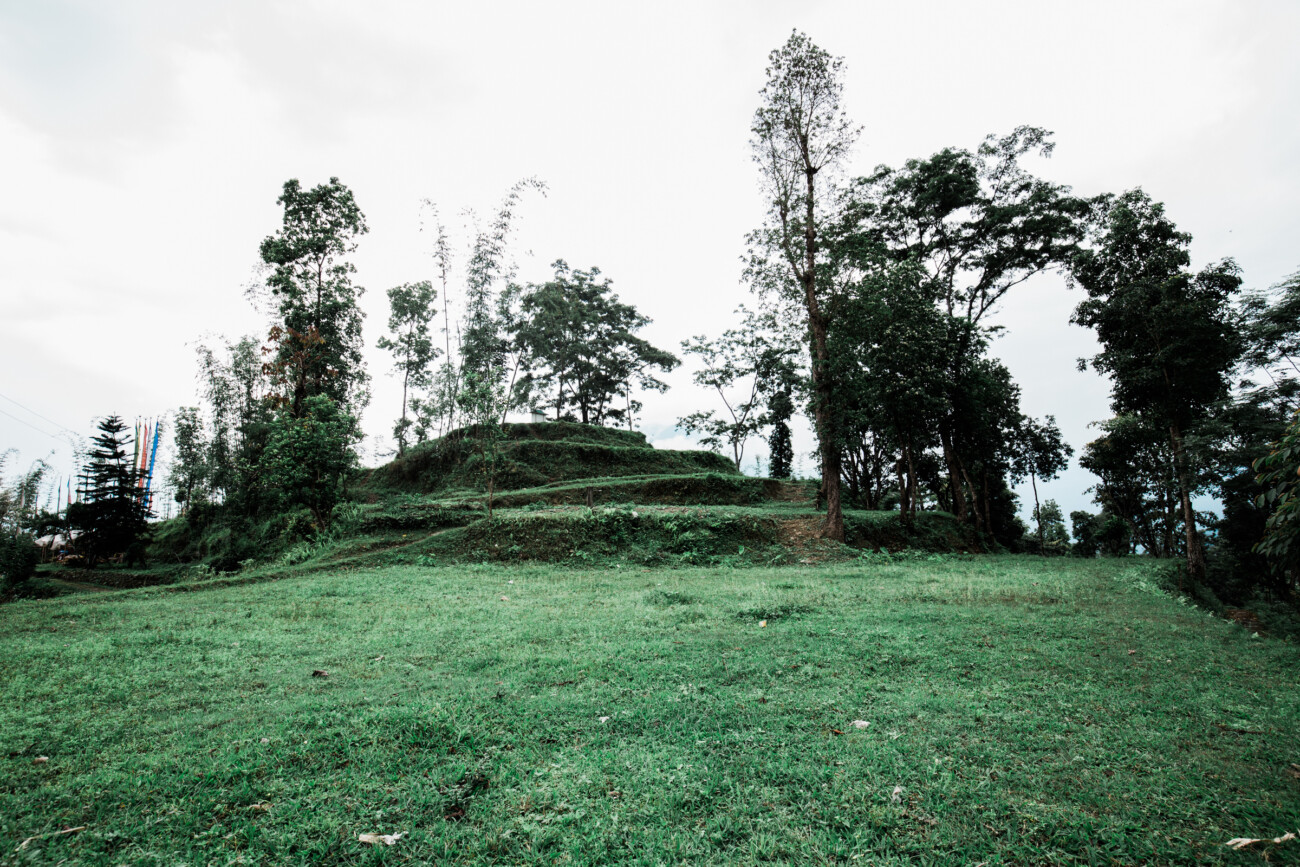
Chandramaya had also pointed towards a cliff called Gardhanay Bhir, where the king hid his wealth. A snake guarded it and on moonless nights people all around saw a blue light glowing. Does the light still burn? “Oh no! The moment they started building roads, blasting the hillside, it disappeared.”
For years, Taranath worked quietly trying to raise money from his community to purchase the land where Mangardzong once stood. After mobilizing the funds and negotiating the price with the Tamang brothers who owned the land, he was finally able to buy the land in 2016.
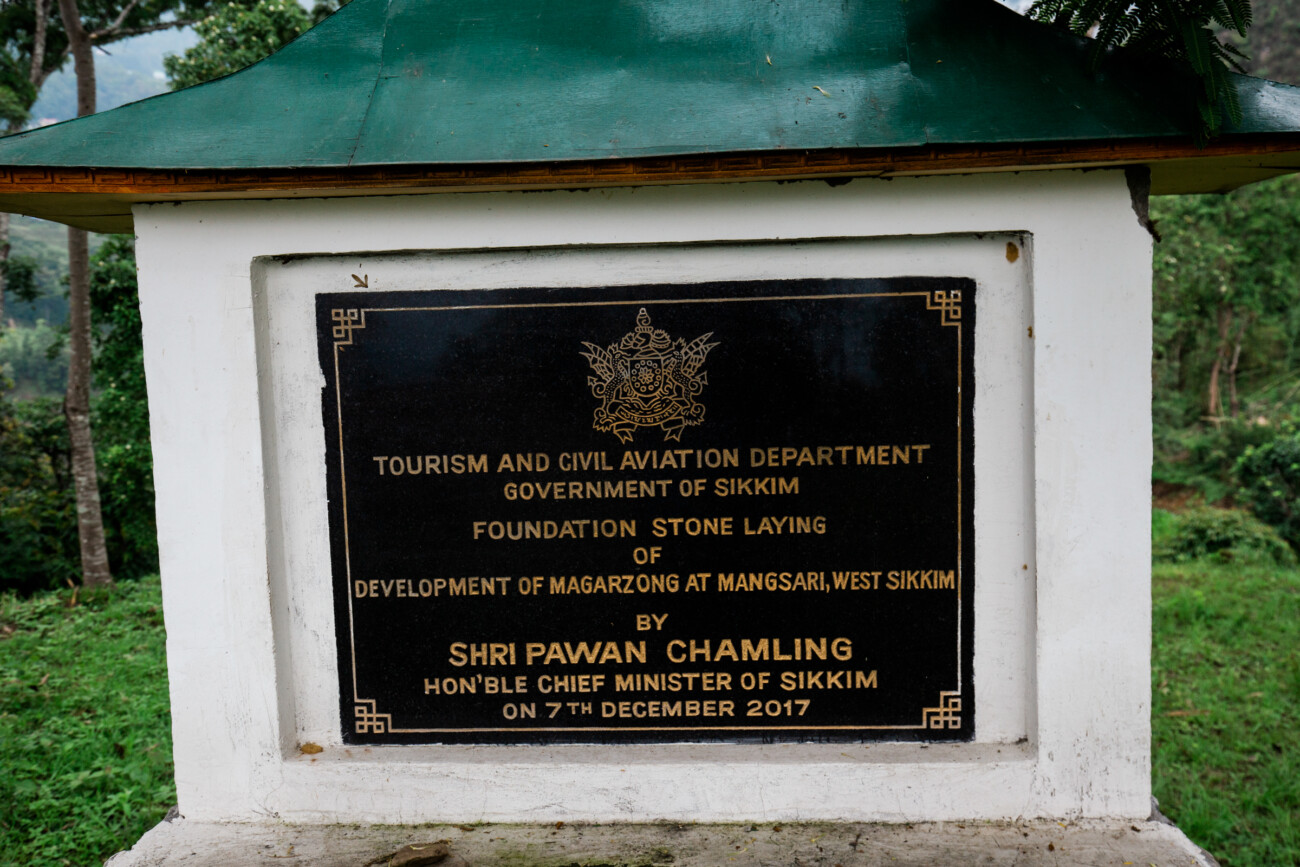
His efforts did not go unnoticed. One of the priorities of the Sikkim Democratic Front Government was to revive the histories and cultures of different communities who make up the population of Sikkim. The government, through the Department of Tourism, initiated a project to develop the area as a tourist destination. The foundation stone for the project was laid on 7 th December, 2017, and land around the hill was purchased to enlarge the area to accommodate a learning centre, a museum and other tourist facilities.
Eminent Mangars
Although much reduced in numbers, and scattered over many parts, members of this tribe have played a critical role in the political and cultural spheres in contemporary Sikkim. To name a few, Rashmi Prasad Alley, born in Gowalpara district Dhubri in Assam, with his early education in Assamese, matriculated from the Government School, Tezpur, in 1913. In 1918, he was appointed the branch director of Nepali Trading and Publishing Company in Assam. He went on to become the editor of Gorkhali newspaper. In 1919 he moved to Kurseong as the director of Hari Printing Press and worked along with Parasmani Pradhan on Chandrika. In 1920, he came to Sikkim and was appointed the Principal of Nepali Boarding School as well as the Bhutia Boarding School. He combined the two schools and established Tashi Namgyal High School in 1924.
In 1947 Rashmi Prasad Alley introduced horse-carts to mitigate the problem of transport in Gangtok. He ran a printing press, brought the first cycle, radio, gramophone and photography, and other accoutrements of modern life to Sikkim. He supported the fledgling Nepali literary movement in the state. The writers and poets formed an alliance of Sikkim Writers Association and would meet in a room behind his shop. He also participated in the revolt led by Tashi Tsering against feudalism in the late 1940s.
In the villages of Sikkim, too, there was a growing discontentment against the feudal system. Bhadru Alay Mangar, born in 1907, was from Assangthang in South Sikkim. Although he lacked a formal education, he was determined to learn, and in his twenties, he persuaded a young educated man from Kurseong to come to his village and start classes, where he as well as others learned the basic rudiments of literacy. He also encouraged others from his village to learn the alphabets, and also led them in discussions about the meaning of justice. In 1930, he became a member of the Jashmani sect and began leading a life of simplicity. One day, in a meeting of Sadhus in his house, he exhorted the gathered members of the community not to pay taxes to the headmen. He urged that ‘we need not make them rich by our labour’; the prevalent systems had to be broken and that each must be given his rights. He was arrested and taken to court, but was released immediately.
A large number of the Mangar community feel that there is a lot of catching up to do. While they have found places as teachers, doctors, engineers and soldiers, it is only now that they are seeking to redress the forced amnesia of their history.
Similarly, Balbir Kepchaki Mangar, born in Sangbong block on 7 November, 1902, to a simple farmer’s family was uneducated. However, while tending his herds, he managed to teach himself to read the Ramayana. Later, he moved to Burma and worked as a contractor under the British and experienced the oppressive system of the colonial masters. He returned home to Sikkim, determined to fight this system. He chose to promote education and helped to establish village schools. He also promoted education of women, believing that if women were educated, society would develop. He encouraged people to take a stand against the landlords and their minions. He was supported by like-minded people from his village such as Bhadra Alay Mangar, Dhanbahadur Pulaman Mangar, Lajang Subba, Panduman Rai, Deorup Rai, Nandalal Nepal and Bhagirath Sharma.
Jiwan Kumar Thapa, born in Pankhabari, West Bengal, came to Sikkim in 1958 after eight years of rigorous training in animal husbandry and agriculture in Australia. He joined the Department of Agriculture as Officer-cum-Superintendent. With hard work and dedication, he soon became its director. After the merger with India in 1975, like many senior Sikkim civil servants, he was incorporated into the Indian Administrative Service (IAS), India’s prestigious civil service cadre. Thereafter, he served in the Department of Health and Planning and Development. He was one of the first from the Mangar tribe to attain such distinction and position in Sikkim’s administration.
A large number of the Mangar community feel that there is a lot of catching up to do. While they have found places as teachers, doctors, engineers and soldiers, it is only now that they are seeking to redress the forced amnesia of their history and position as an indigenous people of Sikkim.
References:
- Hooker, J. (1987). Himalayan journals (4th ed., p. 130). New Delhi: Today & Tomorrow’s Printers & Publishers.
- Ahlay, S. (2019). History and Culture of Mangars in Context to Sikkim (p. 54).
- Eden, A. (1864). The Gazeteer of Sikkim.
Photo Gallery
(Click to enlarge)
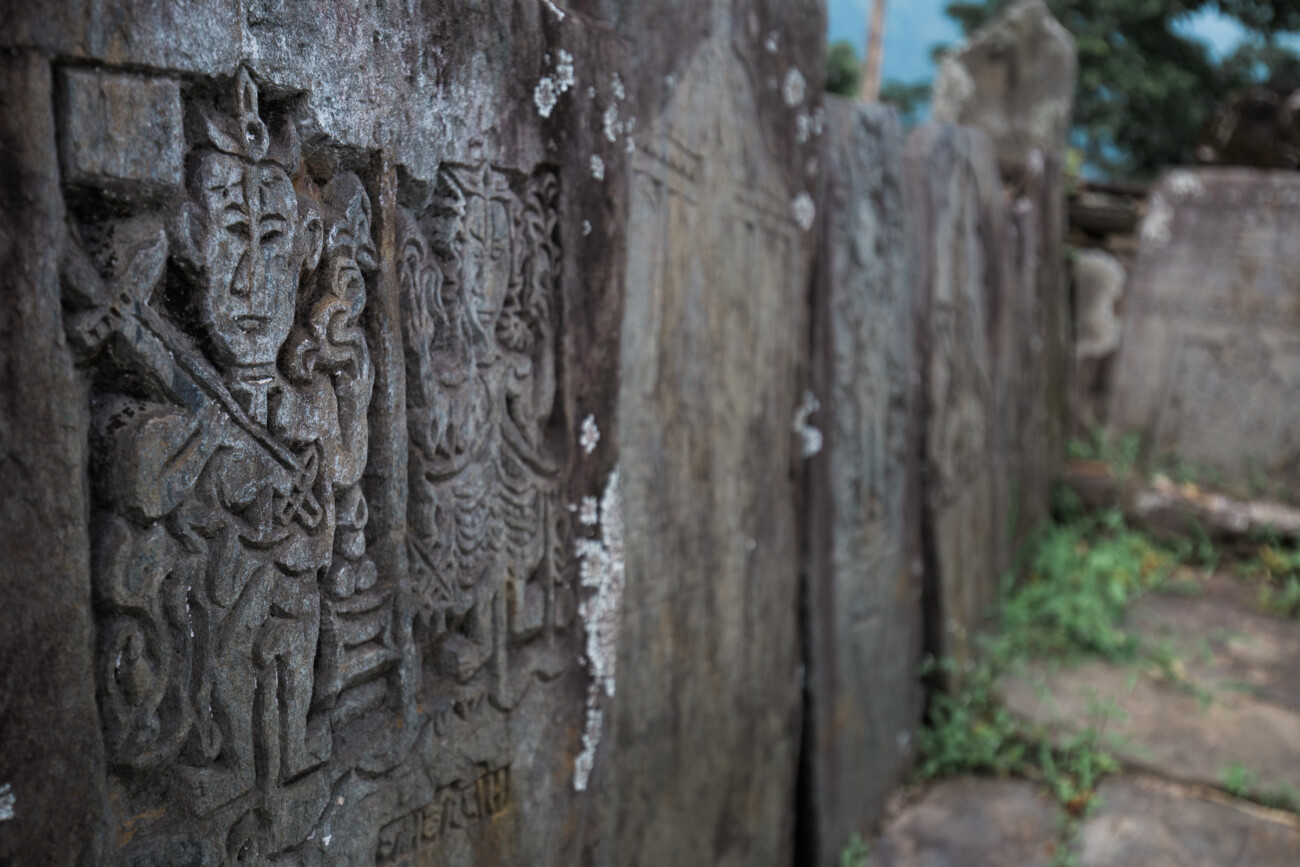
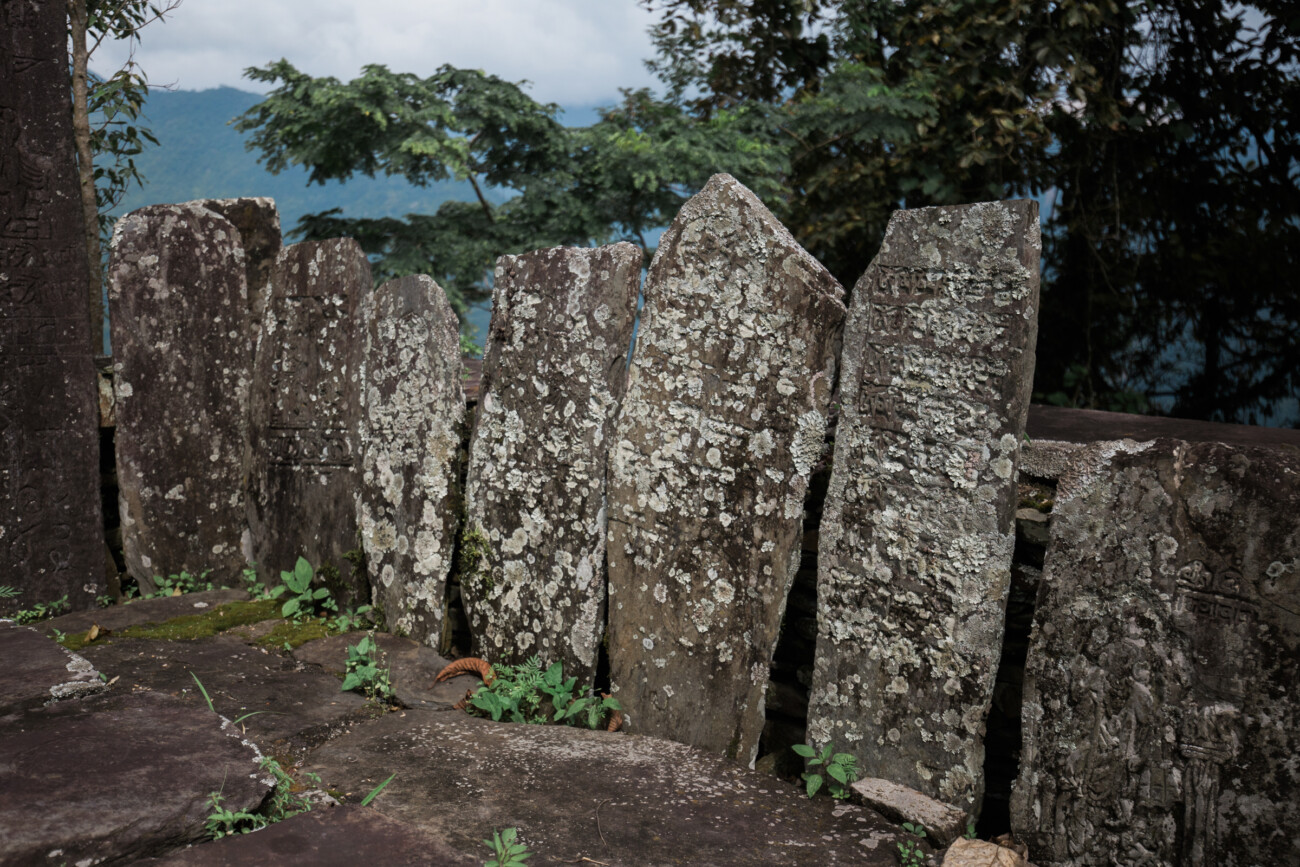
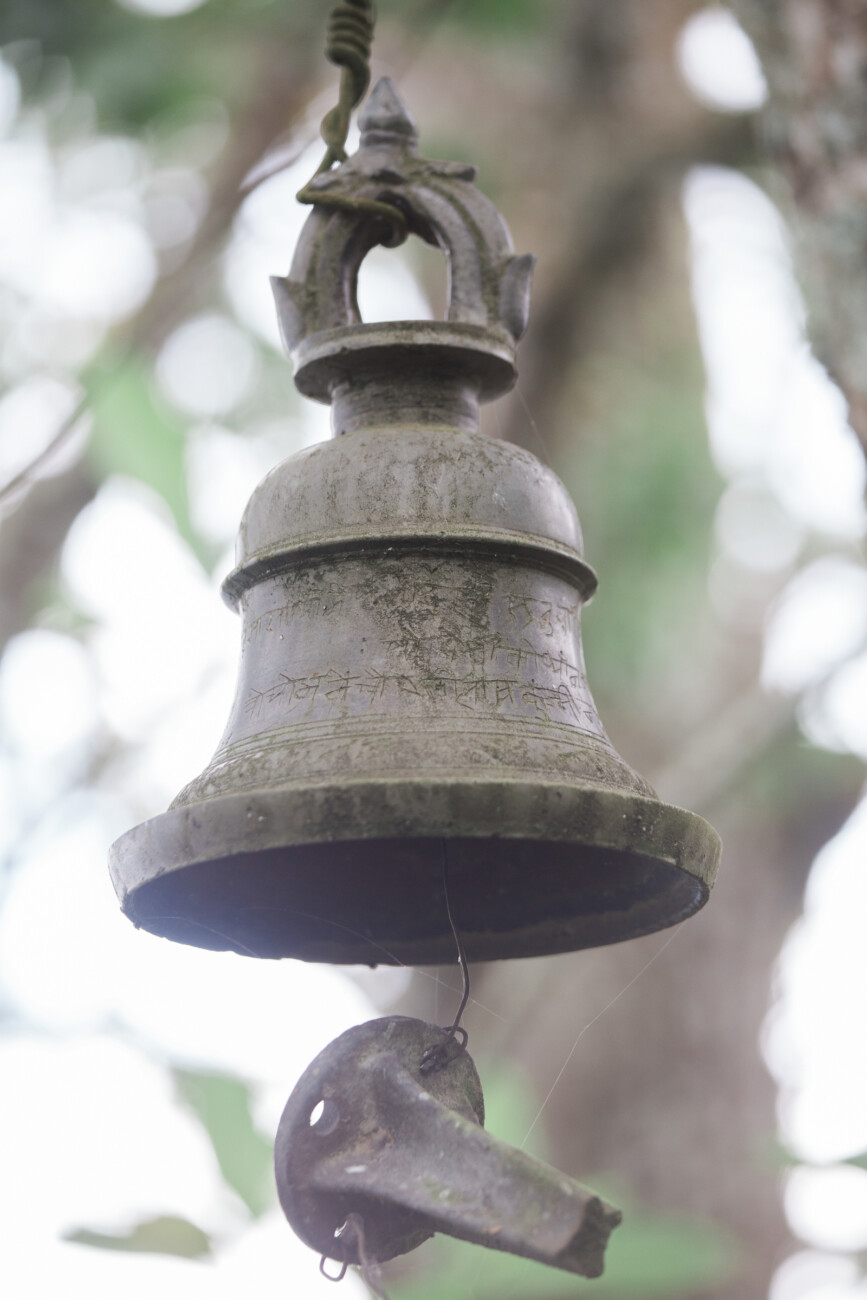

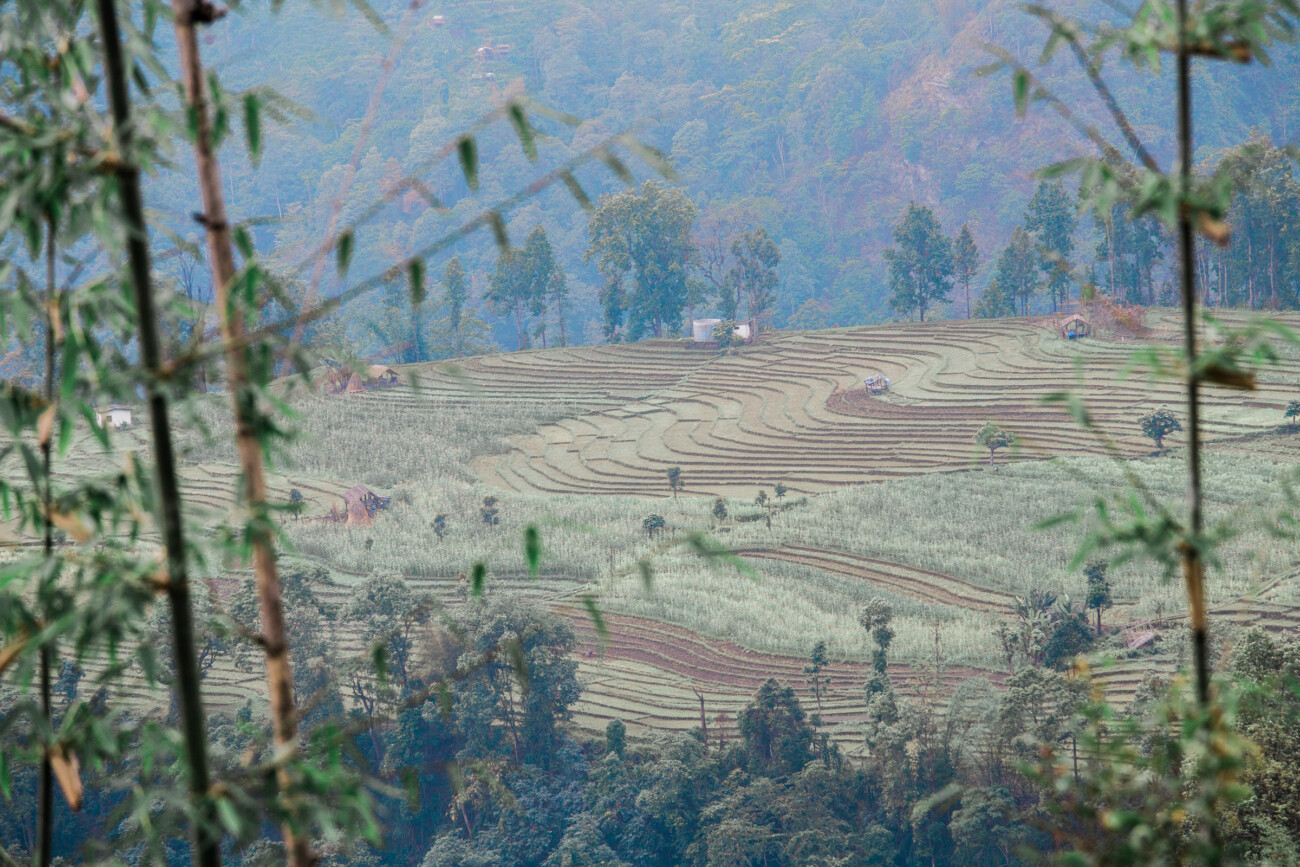
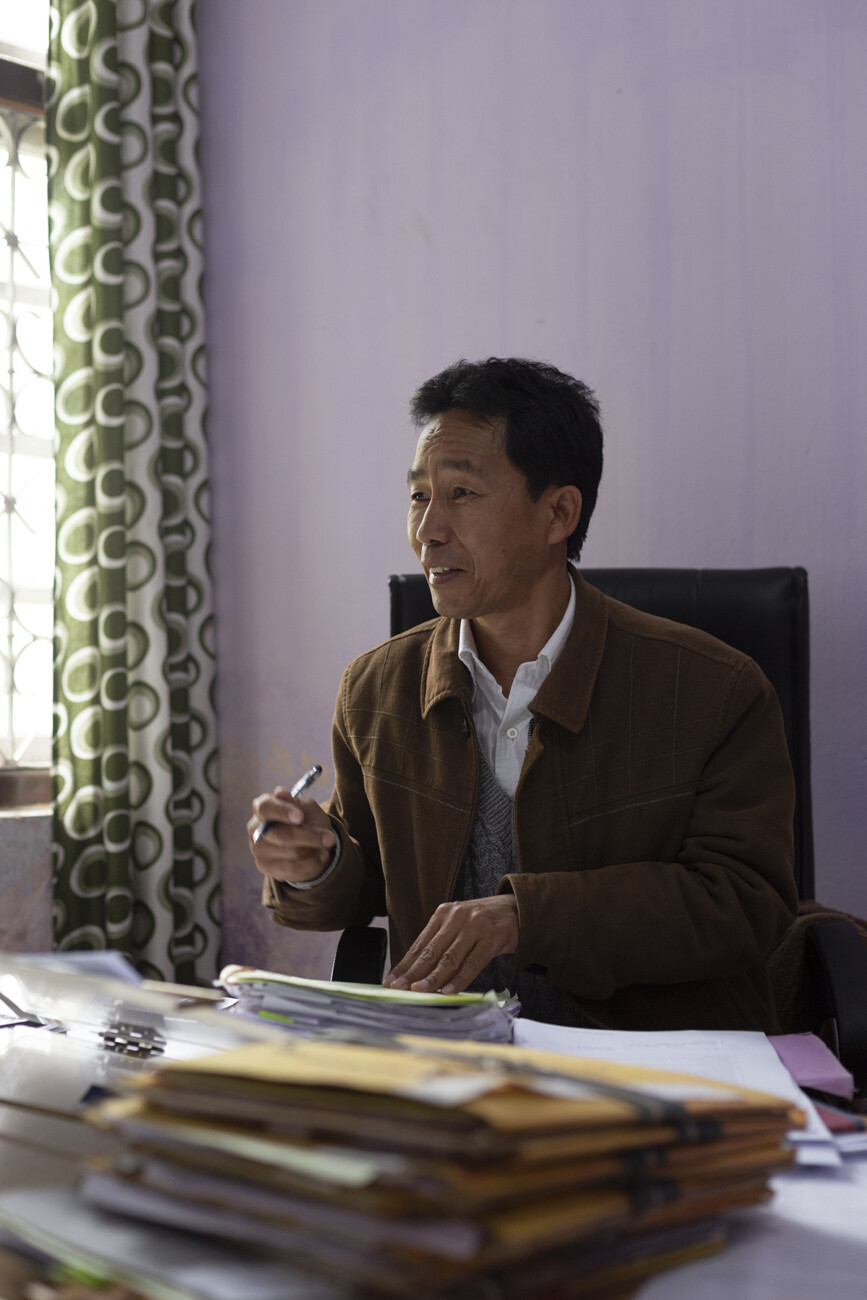
12 comments on “THE MANGARS: REDISCOVERING ROOTS”
Leave a Reply
Latest Posts
Latest Comments
No 'Comments_Widget_Plus_Widget' widget registered in this installation.


This is really informative article on history of mangars community along with history of sikkim before 1642Ad, great worked sikkim article i came to know information about many mangars chiefs who ruled different parts of sikkim also known about how they were brave who fought with Tibetan kings i.g Dal kinari khapangi mangar and Sethi pathi sen . with this comment thank-you member of sikkim artical for such a informative article.
We are really thankful to know the history of our Community. Best wishes to the entire team.
Great article about Mangar community..it is very informative .Thanks to sikkimproject
A piece of very nice information about the Sikkime Mangars. Pleased to know the restoration of the Magardzong project, wish to visit soon.
A piece of very nice information about the Sikkime Mangars. Pleased to know the restoration of the Magardzong project, wish to visit soon.
A nice read.
It is encouraging to know that an educated man is now doing his best to document the history of the Mangars and create institutions to preserve their history and heritage.
I hope this is an inspiration to others to document the history and heritage of several native tribes who contributed to the democratization of society
Wow!!! Breath taking article for Mangers of Sikkim and around the world. I have to appreciate the facts depicted on the article which is not normally seen in the history of Sikkim.
Congratulations to the team Sikkim Project and hope to read more in future.
Great work done I m very interested to read the history of Mangar community
Good research done on Magar tribe, and also thrown good light on Limbu, Lepcha, Bhutia tribes by a fellow Gorkha. Hope more Gorkha researchers would embark on this path of research & discover the hidden histories of other Gorkha tribes too,and bring out their writings/ history books for the rest of us people to enlighten ourselves.
The Gorkhas have been the victims of many ill researched/ distorted history materials earlier brought out by some vested interests to either devide or disrespect the tribal origins of various tribes of Gorkhas. Kudos to the researcher!!!
This is really an eye-opening research article on Mangar Himalayan Hill Tribe. Before going through the book written by my friend Santosh Kumar Alay, I hardly knew the historical facts of Mangar. Thank you entire team.
This is an extremely well researched article. I am currently consulting two of India's best known linguists about their version of the origins of Limbus, Lepchas, Bhutias and Mangars. If they do respond, I shall surely share that with you.
In fact, the three previous articles had also been really substantial. Thanks for the great effort of trying to make sense of history in a land which is singularly lacking in documentation and records.
Hoping to read everything else that follows.
My regards
Congratulations to the team,it's really informative and praiseworthy article..need to add more in days to come... hats off👏